Objective and Overview
In this unit, students make formal geometric constructions with Polypad's geometry tools while getting a greater insight into geometrical concepts.
In ancient times, geometric constructions of figures and lengths were restricted to the use of only a straightedge and compasses. Today this tradition can be used to create a series of puzzle-like lessons. This unit focuses on the geometric constructions of regular polygons:
- equilateral triangle
- square
- regular pentagon
- regular hexagon
- regular heptagon*
- regular octagon
- regular dodecagon
Warm-up
Start with reminding students of the difference between drawing and constructing a geometric shape. You may want to use the Geometric Constructions - Basic lesson plan before starting this activity.
Ask students to construct an equilateral triangle using only a straightedge and compass. Remind students that they cannot use the ruler to measure lengths or the protractor to measure the angles. Have students share their ideas of possible methods. You may also discuss how circles can be used to construct an equilateral triangle. Here are two approaches:
- If a certain length is given, place the compass on one end of the segment and set the compass to the length of the given segment to draw an arc.
- Then keep the width of the compass constant and draw another arc by placing the compass on the other end of the segment.
- Two arcs will intersect somewhere above and below the segments. Use one of the intersections as the third vertex of the equilateral triangle.
- Connect the endpoints of the segment with the intersection point to construct the equilateral triangle.
- If you repeat the same steps by drawing full circles instead of arcs, you may again create an equilateral triangle.
Ask students to measure the angles and the sides of the triangles to prove that it is an equilateral triangle. Discuss with the students why these methods work after each construction.
Main Activity
Many regular polygons can also be constructed using a straightedge and a compass. Invite students to construct the regular polygons listed above. Options include presenting them one at a time, sharing them all with students at once, or sharing some with groups. You may consider working on these in a few class periods or over time throughout a unit of study. Below are the solutions for each.
Square
There are different ways to construct a square. For example, you can use the properties of squares’ diagonals to construct one.
The diagonals of the squares have the same length and are the perpendicular bisectors of each other.
- Construct the perpendicular bisector of the line segment AB.
- Use the midpoint of the segment AB to draw a circle.
- Mark and label the points where the circle intersect with the line.
- Connect four points to construct the square
You may also use the bottom toolbar to construct the midpoint, the parallel, and the perpendicular lines directly.
Regular Pentagon
There are different ways of constructing a regular pentagon. Hirano's construction method of a regular pentagon is one of them. In this method, he uses trigonometry to prove that the construction is accurate.
- Start with drawing a circle with the radius AB, where A is the center of the circle.
- Mark the midpoint of radius AB with C and draw another circle with center C.
- Draw perpendicular line to radius AB through the center A.
- Mark and label the intersection of the circle with the perpendicular line as D.
- Connect D and C with a line segment.
- Mark the intersection of the circle with center C and the line segment CD, and label as E.
- Draw another circle with center D and the radius DE.
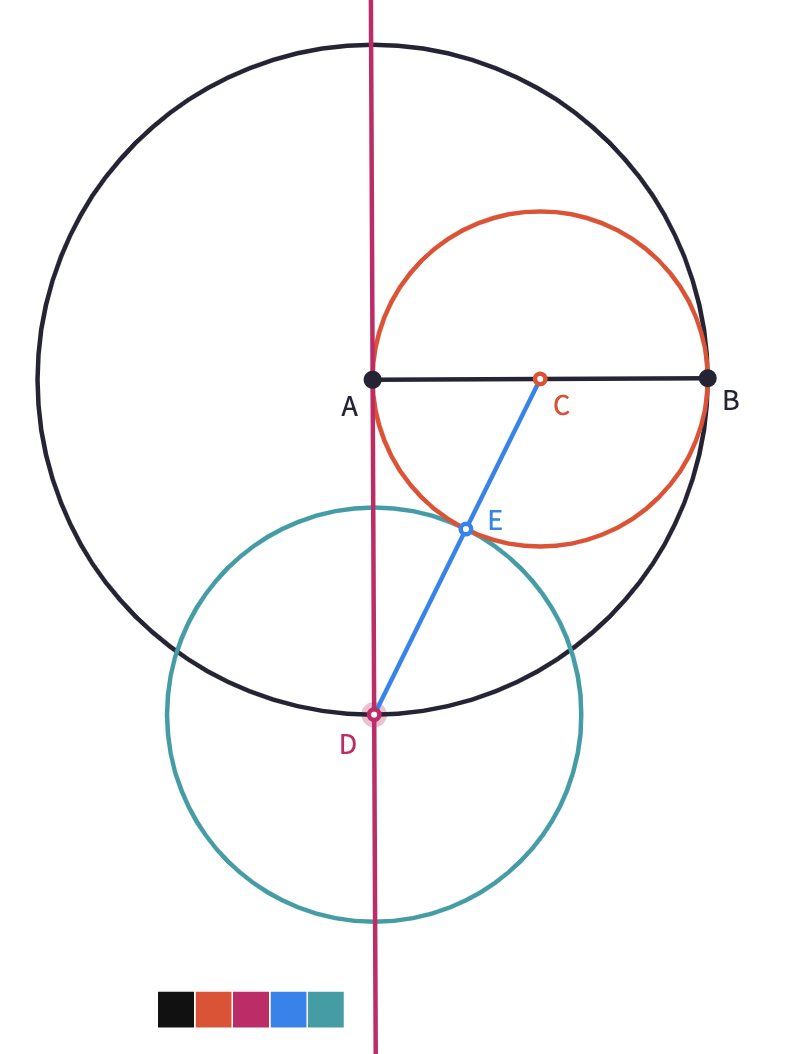
You may want to stop here and ask students the lengths of , , and if the length of is units.
Using Pythagoras’ Theorem, side lengths of ACD triangle can be found. Since and are both radii of the circle with the center C, they are congruent. Therefore the side length of is units.
- Now Mark the intersection points of the circles centered A and D , and label them as H and G.
You may demonstrate constructing the triangle FGD using the custom polygon tool.
units
Line segment DG is also the radius of the circle with center D.
Angle G substends the diameter of the circle, therefore it is 90 degrees. Then, we can use the sine value of the angle GFD to find its measure.
Then, the measure of the inscribed angle HFG is 36 degrees that proves the arc measure of the HG as 72 degrees. Since we have proved to divide the circumference of the circle 5 congruent pieces, we can continue and complete the regular pentagon.
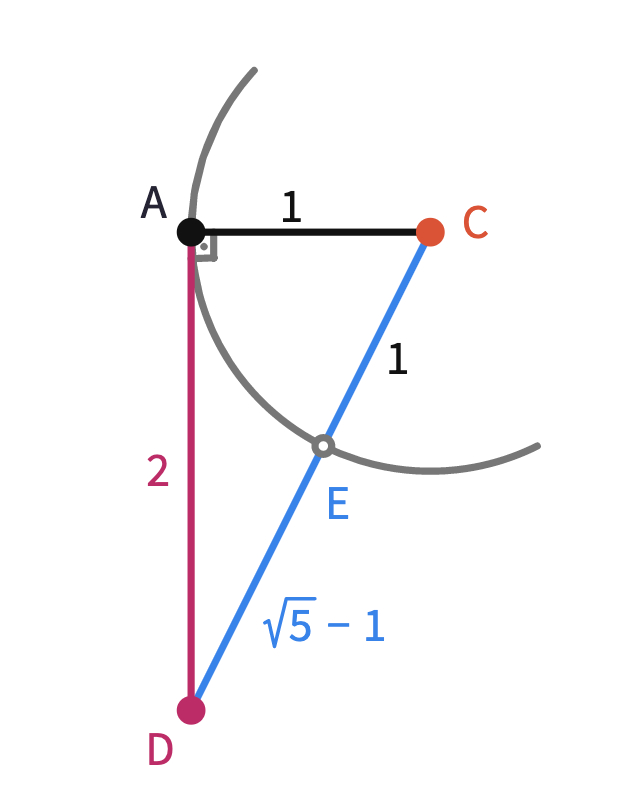
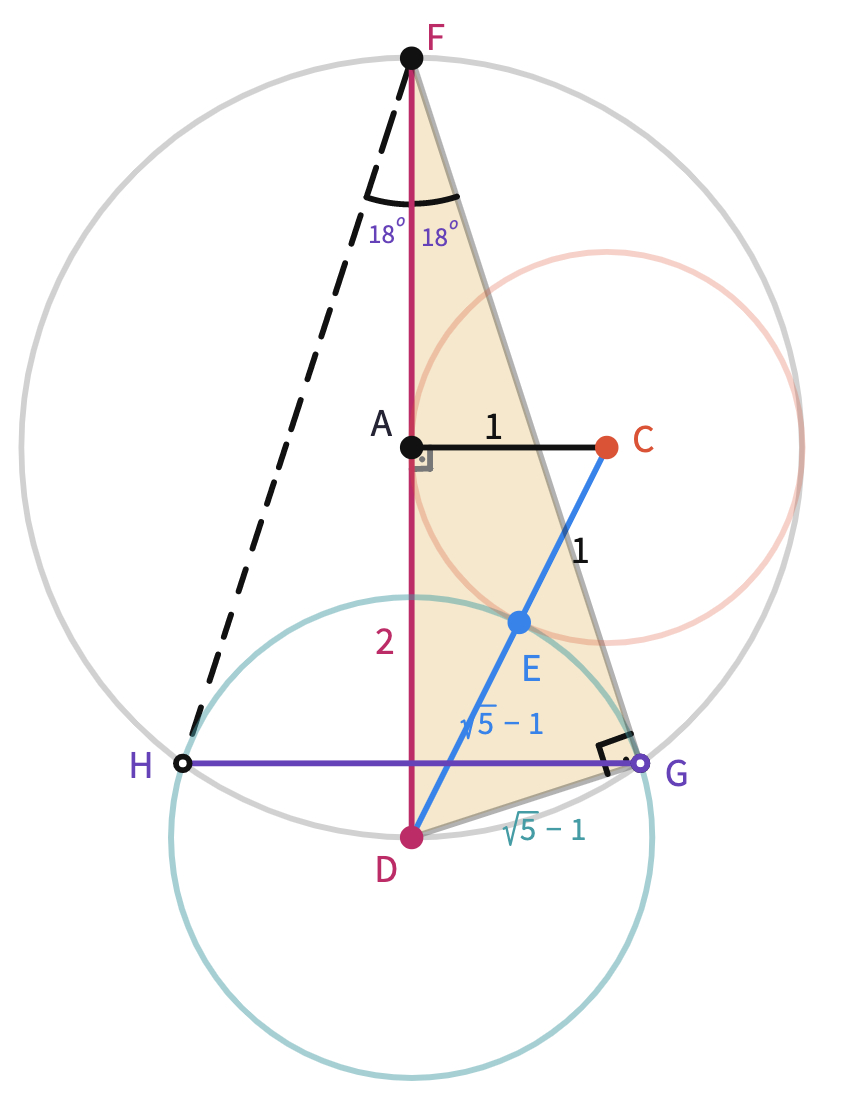
- Place the compass on H and arrange its width as HG to draw arcs on the circle. Repeat three more times until you mark five vertices of the pentagon.
Regular Hexagon
A regular hexagon is made up of six equilateral triangles.
The flower like shape is used in many areas of art and architecture. If only the petal-like arcs are shown it is called a hexafoil. If 19 flowers come together, it is usually called the flower of life.
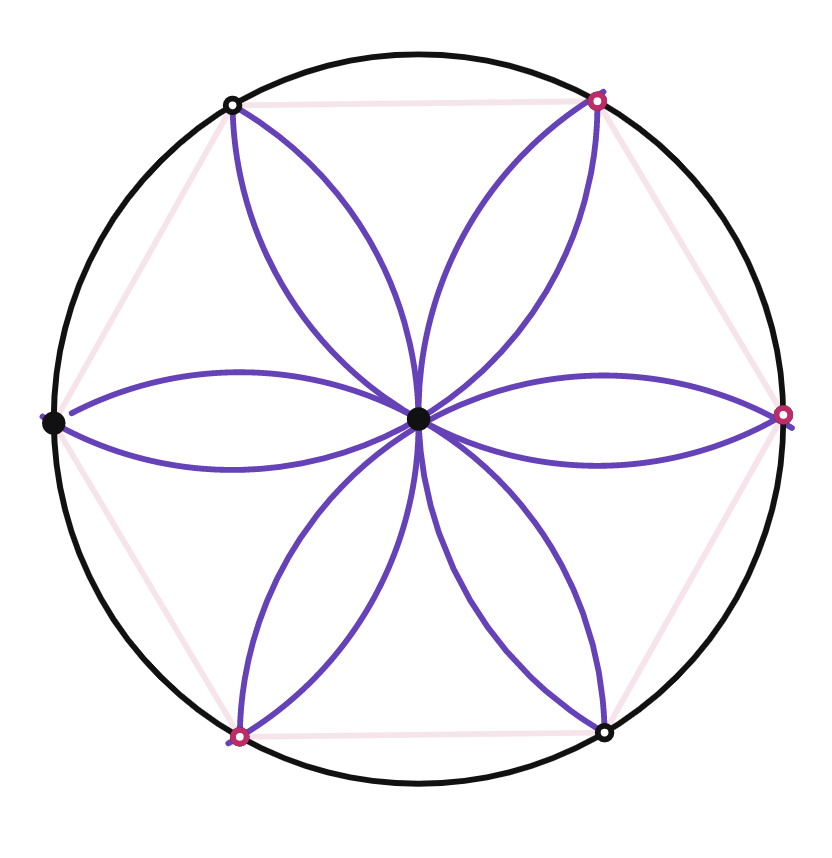
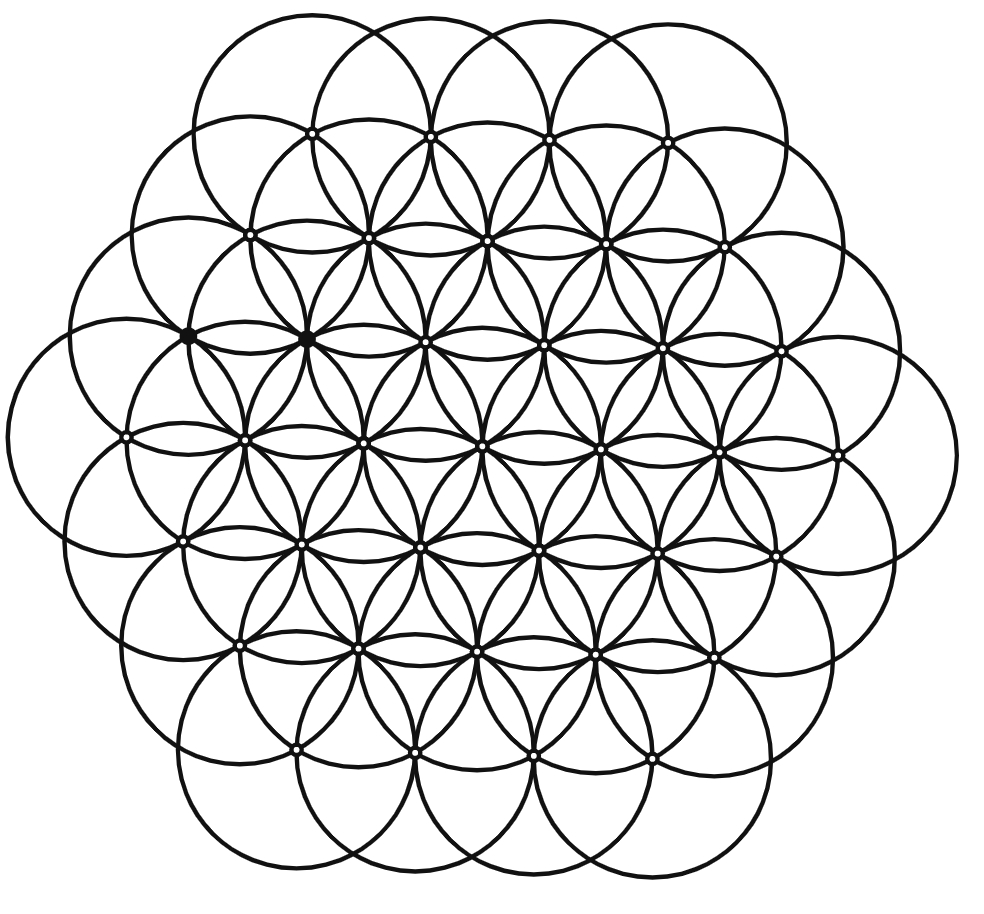
Regular Heptagon
*The regular heptagon is not constructible with compass and straightedge but is constructible with a marked ruler and compass. However, you can construct an approximation for practical use with an error of about 0.2%.
Regular Octagon
Constructing a regular octagon and dodecagon (12-gon) is quite similar.
- Start with drawing a circle with center A.
- Construct the perpendicular diameters as CB and DE.
- Then, connect B, C, D, and E to create a square. (Square Construction)
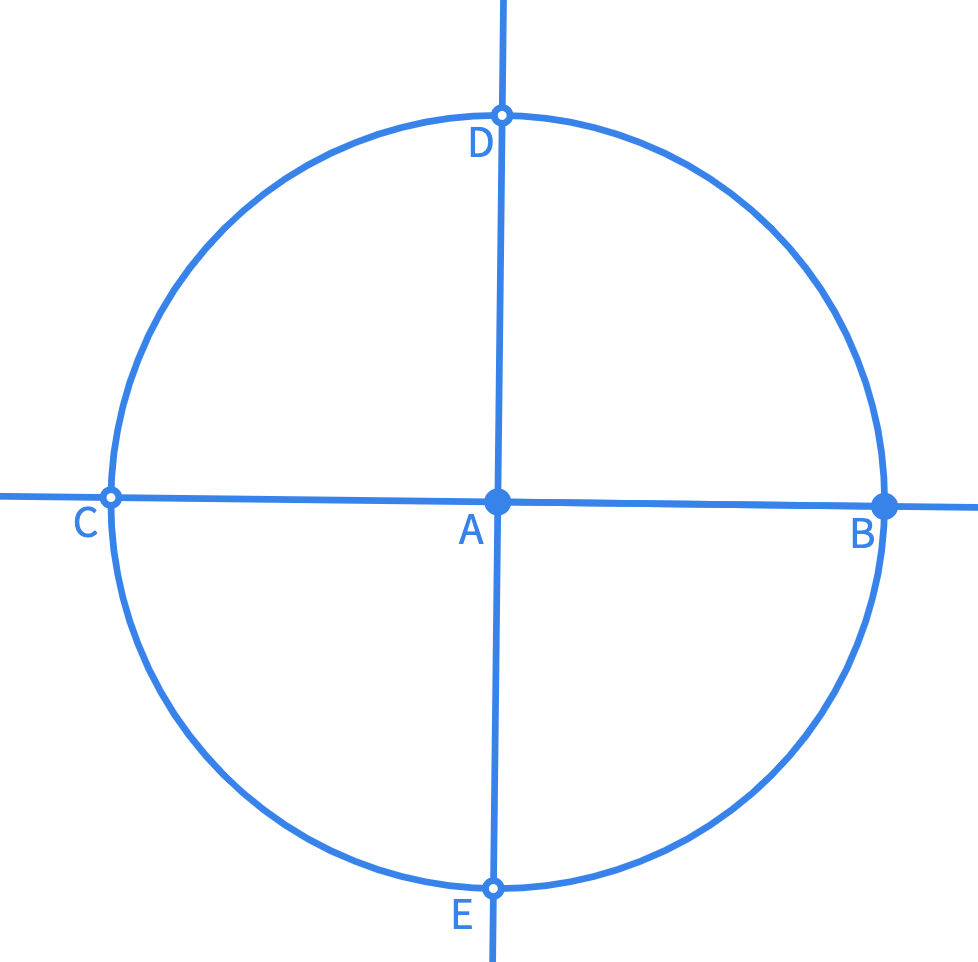
- Construct four circles. Each corner of the square should be the center of one of the circles.
- Construct a point everywhere the circles intersect the square DBEC.
- Connect these points to construct the regular octagon.
- Instead of constructing points where the circles intersect the square, construct points everywhere that five circles intersect.
- Connect all the points to construct the regular dodecahedron.
Closure
Not all regular polygons are constructible. Polygons with 7, 9, and 11 sides are not, for example. However, they can be constructed using a marked ruler (neusis constructions).
Ask students to predict whether a regular 17-gon can be constructed or not. After their predictions, you can share the story of Gauss, who at the age of 15 proved that a regular 17-gon can be constructed.